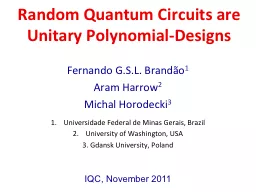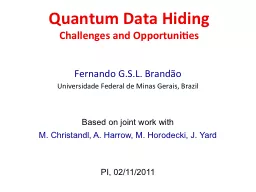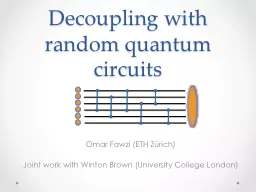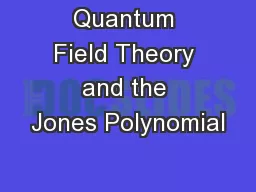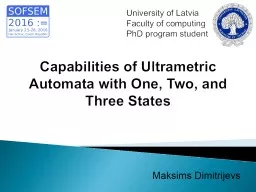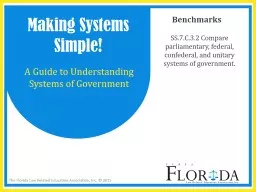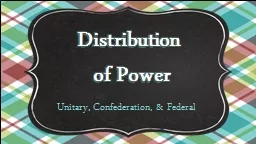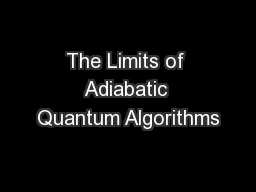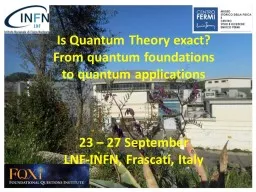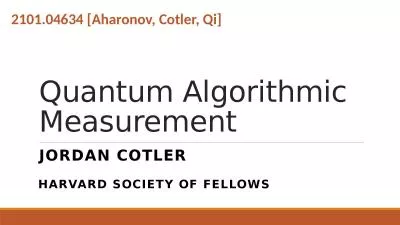PPT-Random Quantum Circuits are Unitary Polynomial-Designs
Author : alida-meadow | Published Date : 2016-08-04
Fernando GSL Brand ão 1 Aram Harrow 2 Michal Horodecki 3 Universidade Federal de Minas Gerais Brazil University of Washington USA 3 Gdansk University Poland
Presentation Embed Code
Download Presentation
Download Presentation The PPT/PDF document "Random Quantum Circuits are Unitary Poly..." is the property of its rightful owner. Permission is granted to download and print the materials on this website for personal, non-commercial use only, and to display it on your personal computer provided you do not modify the materials and that you retain all copyright notices contained in the materials. By downloading content from our website, you accept the terms of this agreement.
Random Quantum Circuits are Unitary Polynomial-Designs: Transcript
Download Rules Of Document
"Random Quantum Circuits are Unitary Polynomial-Designs"The content belongs to its owner. You may download and print it for personal use, without modification, and keep all copyright notices. By downloading, you agree to these terms.
Related Documents

